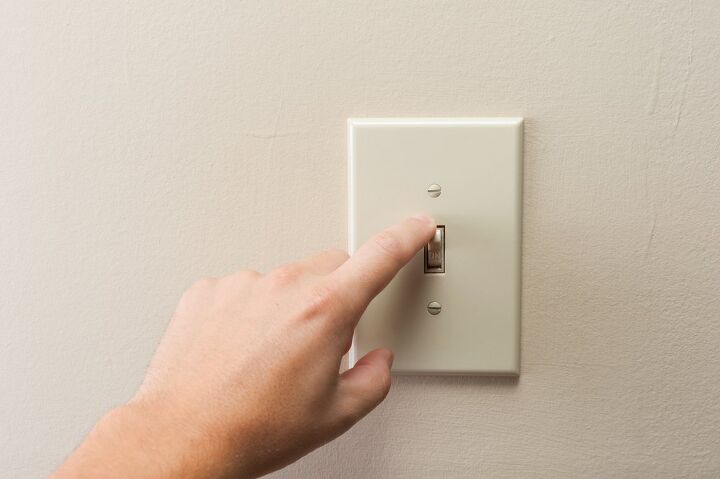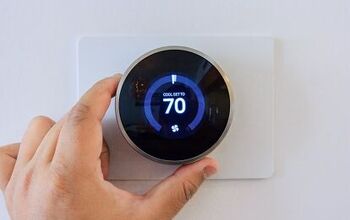Light Switch Not Working After Changing? (We Have a Fix!)

Grab your wire connector, insulated pliers, a screwdriver, and a voltage tester—it’s time to see what’s wrong with that faulty light switch. And if you replaced your light switch recently, there’s a good chance that this has something to do with your light switch not working now. In this article, the common problems which manifest after a light switch replacement will be explained.
After switching a light switch, a malfunction may be caused by improper wiring, a blown fuse, or a problem with the circuit breaker. You’ll need proper tools to diagnose and correct a problem, or you could get help from a professional electrician. This is recommended, as replacing a light switch can be dangerous if you don’t know what you’re doing.
Do You Need to Hire an Electrician?
Get free, zero-commitment quotes from pro contractors near you.

What to Know Before Attempting to Fix a Light Switch
Light switches are inexpensive, and often replacing one doesn’t take a lot of time. However, you should be extra careful when working with a light switch, as these can be very dangerous if not approached properly.
Contact a professional electrician if you’re not capable of working with a light switch. You should never try to work with electrical outlets unless you possess an understanding of how electrical circuits and basic home wiring work.
What Could Be Wrong With Your Light Switch
If the light switch isn’t doing anything, this may be because no power is coming from the circuit. In this instance, you need to check your breaker box, specifically to see if the breaker to the switch is on.
If there are any other tripped outlets, switch these on as well. This is the easiest solution, and for this reason it should be attempted first. But if this doesn’t solve the problem, faulty wiring or a poor connection may be the cause.
When There’s a Flickering Light
Faulty wiring may also be indicated by a flickering light. In this instance, a loose connection may be causing the problem, or a tripped outlet on the same circuit may be the culprit.
What you should do first is turn off the power before working with the light. Once the breaker is off, you should remove the cover plate and unscrew the switch. Next, take the insulated pliers—remember you got these earlier—and pull the switch out of the electrical box. Keep it close by, as you’ll need it later.
Note: Make sure your hands and tools are away from the terminals.
Next, you’ll need the voltage tester to see if the terminal is getting sufficient power. After you make sure the voltage tester is working properly, test the switch by connecting the lead of your tester to the screw and the brass terminal.
If your tester is acting up, you can insert the leads into a functioning outlet first to see if it can get a reading properly. If the light doesn’t go on and zero is what you see on the meter, use the other brass terminal. If, once again, no signal is read, you can handle the switch without worry.
Checking the Wires
Gently tug on the black wires to see if they are firmly attached. If you detect a loose wire, tighten the terminal screw. Once it’s secure, the switch should be screwed back into the electrical box and then the breaker should be tested. If the light works, just put the cover plate back on and you’ll be finished.
Note: In the instance where it’s determined that wires are loose, check to see if there’s melted plastic. If there is, you’ll need to replace the switch, as it has been damaged by arcing.
What to Do Next
If the black wires weren’t the problem, you need to turn off the power again. After this is done, you should disconnect the wires from the switch. Next, use your pliers to twist these wires together so the wire connector can be attached.
After the connecter is firmly attached, turn the breaker back on. If the light still doesn’t come on, you’ll know you have a bad switch that needs replacing.
Additionally, if the light flickers and doesn’t come on when you bypass the switch, there may be a loose connection in the circuit somewhere else. In this instance, further investigating will be required.
But you should not approach this if you don’t have the right experience. Instead, you should get help from a trained and experienced electrician.
What Happens When a Fuse Burns Out
A burnt-out fuse could also be causing the light switch to malfunction. Don’t buy a new light switch without consulting your circuit breaker first. In most instances, a fuse just has to be replaced.
But if you notice you have a burnt-out fuse, you may want to reassess how much energy you’re using. This way, you won’t have to deal with overloading the wiring in your house again.
You may also reconsider the type of lights you’re using. Perhaps they’re too bright, and therefore too powerful, for where they’re being used. Also, certain switches are better at saving energy than others.
When a Light Switch Is Hot or Buzzing
If you examine your light switch closely and you hear a buzzing or humming sound coming from it, this is a sign that there’s something seriously wrong. The same can be said for a light switch that’s too hot to touch.
Even if your light switch is technically still working, it could be a big fire hazard. Address this problem as soon as you can, and know that a loose wire or overloaded breaker is probably causing the problem. Addressing this problem now will mean less problems in the future.
When Replacement Is Necessary
It may be time to replace the light switch altogether. You’ll know whether or not this is necessary when you first take off the switch cover.
To do this, remove the light switch from the wall and all the wires that are attached to it. Then you should insert your replacement switch and make sure it’s secure. Once all the wires are matched up, your light should be good to go. Turn the power back on and see that your light problems are a thing of the past.
Know When It’s Time to Get Help From an Expert
If you lack experience, you shouldn’t attempt to do a light switch rewiring on your own. This is dangerous work if you don’t have the right expertise, and it’s much better to get a professional electrician out to fix your problem.
A professional electrician will work fast, and for this kind of work they won’t charge a lot of money. Is saving a few bucks worth possibly damaging your wiring even more or seriously hurting yourself?
There’s no question that getting a professional electrician’s help for any electrical-related repair problems is the way to go.
Related Questions
Replacing a light switch can lead to a lot of unforeseen problems, and thus in part explains why homeowners have so many questions about replacing light switches. The frequently asked ones are answered below.
Why does a light switch give off electric charge sometimes?If you feel a shock when you touch the metal screws that are attached to your light switch, this is because of a static discharge. This isn’t out of the ordinary, as it’s just a buildup of electrical charge escaping from the surface of an object.
When the electrons move from surface to surface—and both surfaces are insulators—the electrical charge will build up. Feeling a shock from a light switch is just as harmless as feeling a shock from too much carpet friction.
In most cases, these shocks are more irritating than dangerous. However, a larger shock may indicate faulty wiring behind a switch.
Can I leave a faulty light switch in place with no problems?If your light switch is not channeling electricity properly, you may be at risk when using it. The light switch could have frayed wiring or damaged circuitry, and maybe even a broken cord is what’s causing the current to be unstable.
In any case, you shouldn’t wait for a shock to be what tells you to get your light repaired. Once you see it flickering or not working at all when properly plugged in, it’s best to address the situation immediately.
Do You Need to Hire an Electrician?
Get free, zero-commitment quotes from pro contractors near you.

Final Note
If you’ve just replaced a light switch and now it’s not working, a few things could be the problem. You first need to see what level of “not working” you’re dealing with. Is the light not going on at all? Is there flickering?
Once you know how much electrical supply there is, you can go to your breaker box to see what the problem is. Check the wires first. If they’re fine, next check to see if there are any blown fuses. Lastly, if you hear any unsettling sounds coming from your light switch, this is when you should get an expert’s help, as there may be something seriously wrong.

Matt loves everything DIY. He has been learning and practicing different trades since he was a kid, and he's often the first one called when a friend or family member needs a helping hand at home. Matt loves to work with wood and stone, and landscaping is by far his most favorite pastime.
More by Matthew Mountain













![The 10 Best Table Saws - [2022 Reviews & Buyer's Guide]](https://cdn-fastly.upgradedhome.com/media/2023/07/31/9070645/the-10-best-table-saws-2022-reviews-buyer-s-guide.jpg?size=350x220)













